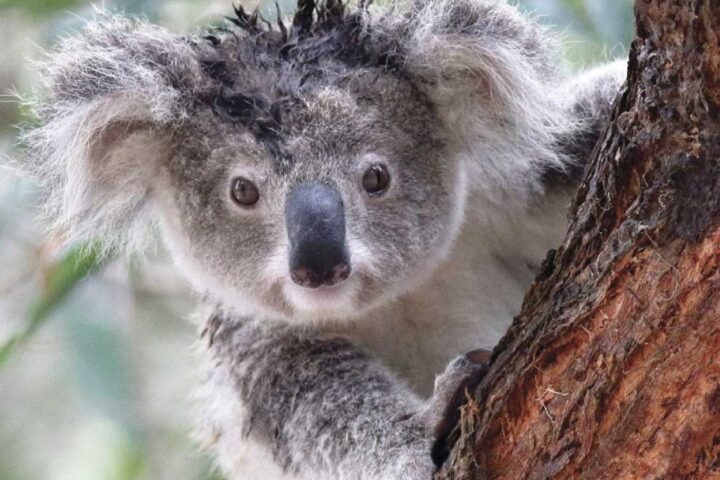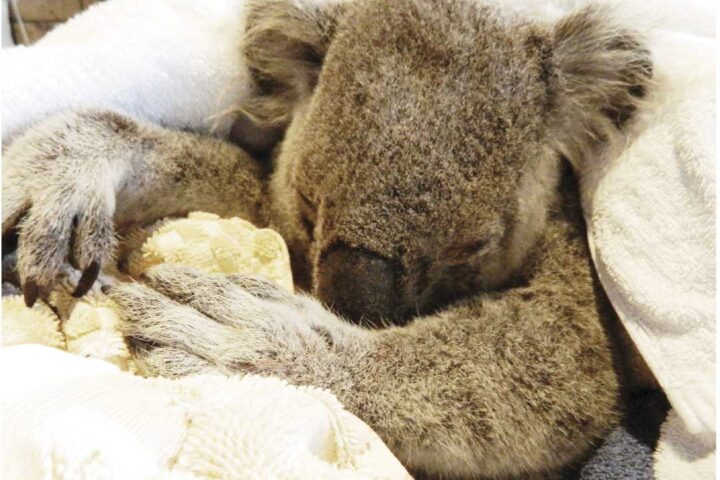Warning for whale watchers in Broome as humpback numbers explode
Updated Wed 28 Aug 2013, 3:55pm AEST
The increased protection of humpback whales has resulted in their numbers exploding in recent years.
It is making for some spectacular sights off the West Australian coast, where around 40,000 of the animals make an annual migration.
Looking out over the turquoise waters off Broome’s Gantheaume Point, the return of the humpback whale is clear to see.
But it is also creating a safety risk for the hundreds of boaties that take to the waters off Broome.
Safety concerns
Sarah McCallister from the Department of Parks and Wildlife has issued a warning for local fisherman going whale watching: admire the whales and take their photo, but don’t get too close!
“Because of the numbers of whales in the waters at the moment it is quite difficult to stay as far away as possible, but what we’re asking people to do is to stay 100 metres away from whales, and only approach them from the sides of the direction that they’re travelling,” she said.
“The animals can get really distressed, especially at this time of year when they have calves.
“Signs of distress are when they dive very quickly when the boat comes near, they might change direction very quickly and their breathing patterns may change, so it’s very important that we maintain that 100 metre distance so as not to distress them.”
The whales are returning to the Antarctic after breeding in the warmer waters off the northern Kimberley.
Humpbacks were hunted close to extinction last century, but since being protected in the 1960s, their numbers have been increasing by 10 percent a year and that is increasing the interactions between local boaters and the enormous mammals.
Education
Ms McCallister says her team is doing fortnightly boat ramp blitzes where they visit boat launching areas and talk to the recreational boaties before they head out.
“We also contact all the commercial tour operators and have a chat to them about appropriate whale interaction, and we’re also heading out on weekly patrols on our Yawuru ranger boat, Djanibari,” she said.
Luke Puertollano, the head of the Yawuru Rangers is certain he has seen a lot more whales this year than in past years.
“Is that a good thing? It would great to see a protected species coming back, like that is really, really good,” he said.
The ranger group was established two years ago following the settlement of Yawuru’s native title claim over the Broome area.
Yawuru is now jointly managing many of the bush and coastal areas around the town with the Department of Parks and Wildlife.
Mr Puertollano says that enables the Department to tap into the huge store of local knowledge of the landscape.
“We’ve only pretty much scratched the surface of it really,” he said.
“I think the longer the program runs, the more Yawruru and the Department of Parks and Wildlife and the public can get out of it.”
For now, his priority is ensuring whales and fishers can co-exist.
Near misses
Some boat owners are returning to shore with tales of the enormous mammals looming under their dinghies and slamming their tails into the waters within metres.
Mr Puertollano says there is a real risk of boats being upended.
“The mothers and the calves are heading south now and as with any territorial mother figure, they’re going to want to protect their offspring, so there’s definitely risk of injury,” he said.
The increasing whale numbers are also proving a boon for the local tourist trade.
Cameron Birch, who owns and operates a whale-watching charter business, is one of those reaping the benefits.
“We’ve just moved to a new and larger boat this year and have absolutely no problems filling that and could probably fill a second one if we had another boat available at the moment,” he said.
His guests are seeing 20 to 30 whales each trip and he is expecting the whale numbers to increase further.
“This group four population that we have travelling up the WA coastline, you know, back in the 1930s when humpback whaling was stopped, the number of whales was down to about 400,” he said.
“It’s taken them 70 to 80 years to get back to the 35,000 to 40,000 odd whales that we’ve got now and their numbers are increasing, according to the scientists by about 10 per cent per annum.
“So we’re expecting to see 3,000 to 3,500 new humpbacks each year.”




